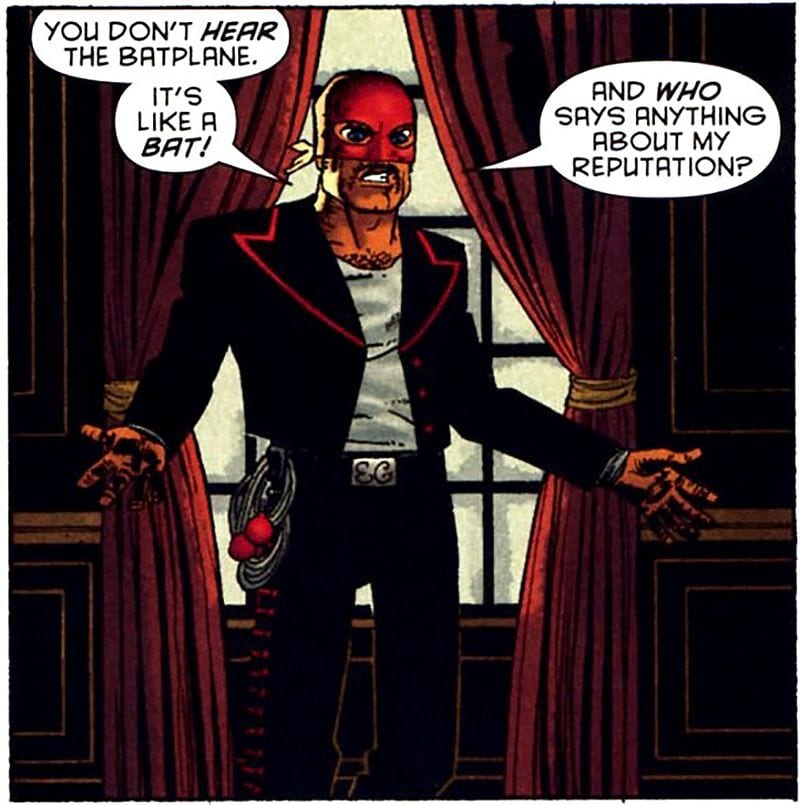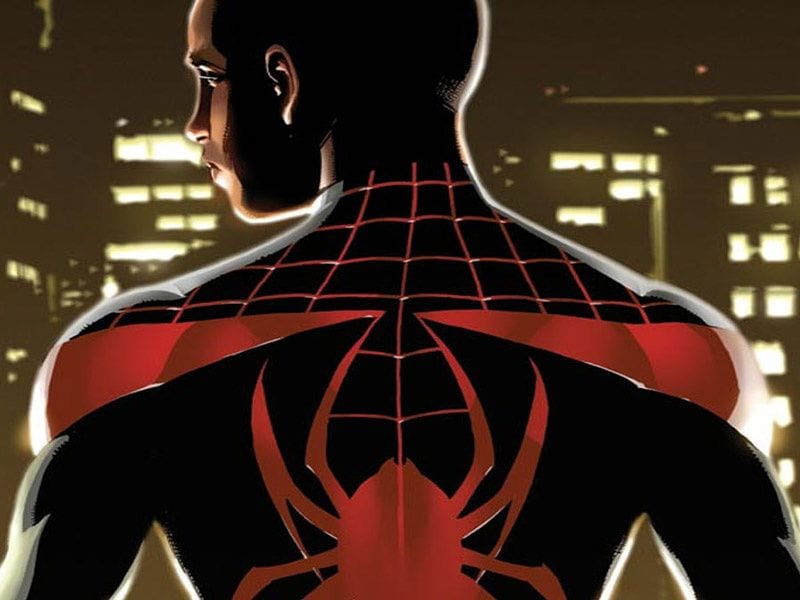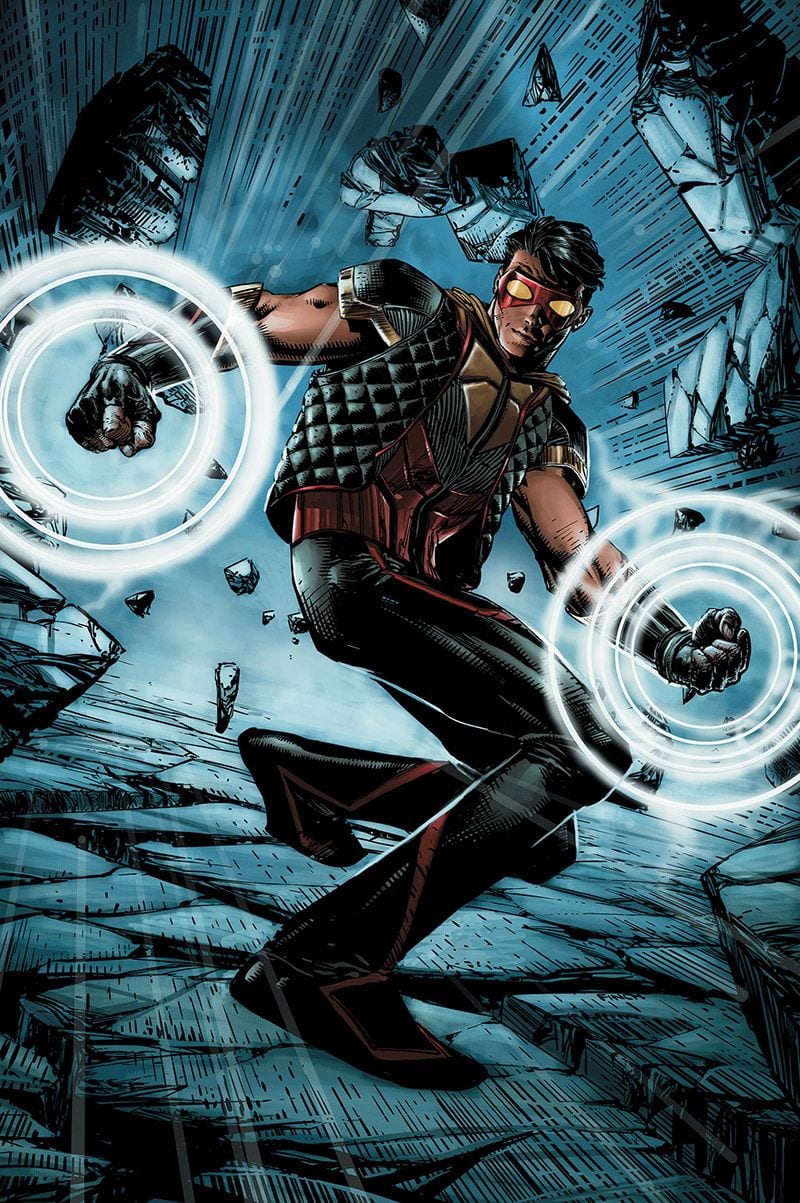
Frederick Luis Aldama may be the most productive comics scholar alive. He’s a one-man library, having (co-)authored or (co-)edited over 30 books (nine on comics, this book included) in 15 years, and served as editor, co-editor, or board member of numerous journals and university press book series that cater to the growing field of comics studies. In addition, his work has been influential in both Latinx studies and narratology, and he has advocated at the community and institutional level at Ohio State University and among comics creators to provide greater opportunities for Latinxs and other people of color.
I say all of this as background not merely to praise an important and humane scholar, but because these aspects of Aldama’s scholarship and lifework as Latinx educational activist are bound up in the project that unfurls in Latinx Superheroes in Mainstream Comics, which is nothing short of a recovery project, an effort to compile and present for lay and scholarly audiences alike an archive of Latinx characters in superhero comics and in animated, televisual, and filmic media. Aldama provides both a history of Latinx superheroes in the American comic-book mainstream, focusing on DC and Marvel comics, as well as useful groundwork for theorizing the storyworld (co-)creation that takes place in the popular culture terrain of superheroe comics, particularly as relates to both the ethics of creating Latinx superheroes and the subsequent reception (critical, personal, world-making, or otherwise) by Latinx and non-Latinx audiences.
Latinx Superheroes in Mainstream Comics is the most recent in a line of similar books that have sought to trace the representation of non-white men in American comics and particularly in comics of superhero variety. Aldama’s project, then, is preceded by the likes of Adilifu Nama‘s Super Black (University of Texas Press, 2011) on African, African-American, and Afrodiasporic superheroes; Michael Sheyahshe’s Native Americans in Comic Books (McFarland, 2008) on representations of indigenous caped crusaders; A. David Lewis and Martin Lund‘s Muslim Superheroes (Harvard University Press, 2017) on the super-powered peoples of Islam (also dealing with ethnoracial representations of Arabs, Arab Americans, and other groups for which Islam is the predominate religion); and a handful of studies, like Carolyn Cocca‘s Superwomen (Bloomsbury, 2016) on female-identified superheroes.
All of these studies, not coincidentally, are appearing at a time when calls are being lobbied for greater diversity within both the comic-book industry (among creators) and within the comics themselves (among characters). As fans and critics alike call for more LGBT/queer, women, and people of color superheroes, scholars are increasingly turning their eye toward the history of superhero comics’ representation of the those groups, discovering the many and complex ways in which such characters tell us about the history of difference, oppression, and marginalization in American society, while also expounding on the history of a popular media industry’s practices of representation (or, as the case often is, erasure). Thus, a book like Latinx Superheroes in Mainstream Comics fills an important lacuna in superhero and comics studies, but beyond that, Aldama has written a book with broad appeal in limpid, sometimes humorous, and always enticingly personal prose that makes an ethical project of comics scholarship and beckons those of us who read his work to dive deeper, to follow him into the comic-book storyworlds of Latinx superheroes, and to further the work he has begun.
Latinx Superheroes in Mainstream Comics is only three chapters long, but it packs a punch. It includes a short prologue to contextualize Aldama’s purpose—to recover a Latinx superhero archive—as well as a foreword by the comics artist and scholar John Jennings (co-editor of the Eisner-winning essay collection The Blacker the Ink, Rutgers University Press, 2015) and an afterword by comics artist and writer Javier Hernandez. The framing pieces offer unique, personal accounts of the significance of non-white superhero characters to non-white comics readers, drawing connections between, on the one hand, the comics industry as a producer of minority representation or erasure and, on the other, the minority reader’s subjectivity in relation to the industry and American culture at large. This constitutive relationship between text and reader, Aldama shows, is central to why studies of diversity and representation in comics are necessary, and also why comics scholars should use their position as critics to call for changes from within the comics industry.

Chapter one (which clocks in at 83 pages) provides an archive of the roughly 50 Latinx superheroes Aldama has discovered surveying the superhero comics from their inception to 2016. Chapter two offers a “theory” of Latinx comics superheroes, but the chapter title is slightly misleading, if only in the sense that it’s actually a limiting of the applicability of Aldama’s account of comics as texts whose narratives are co-created through reader experience and personal investment, all of which, he argues, hinges on aspects of comics craft that he labels “geometrizing” and “storyfying”. Chapter three follows in the footsteps of chapter one, and traces the transmedia migration of Latinx superheroes into animation, television, and film; it’s a major contention of Aldama’s that superhero studies must deal equally with comics and other media, since the comic-book storyworlds of DC and Marvel, by and large, are the “protoworlds” from which other superhero media are built. Aldama also provides a handy appendix that lists the many Latinx superhero comics creators working in the Americas and Asia (the Philippines).
Suffice it to say that chapters one and three are without a doubt the most significant contribution of Latinx Superheroes in Mainstream Comics to contemporary comics studies. Chapter one, for example, traces the history of Latinx superheroes from their origins in the ’40s-’50s, when criollo (white, Spanish descent) superheroes like The Whip (All-American Publications/DC, 1940) and El Gaucho (DC, 1955) began to appear. Aldama charts the history of Latinx superhero representations alongside the history of the industry, tracing the ways in which industry-wide changes and trends—such as what José Alaniz has called the “social relevance” movement of the ’70s—transformed the representation of Latinx peoples, sometimes for the better, as for example with Bill Mantlo and George Pérez’s Hector Ayala/White Tiger (Marvel, 1975) or Chris Claremont’s Roberto da Costa/Sunspot (Marvel, 1982), and sometimes for the worse, as happened with Steve Englehart and Joe Staton’s Gregorio de la Vega/Extraño (DC, 1988) and Grant Morrison and Mark Millar’s brownface character Curt Falconer/Aztek (DC, 1996).
Aldama is attentive to the ways in which Latinx creators influence the telling of Latinx superhero stories, and he points out both the propagation of repeated stereotypes as well as the use of historical, cultural, and linguistic context to “geometrize” a character and give it dimensions of realism that suggest a real awareness of Latinx experiences in the US on the part of the creators. A particular boon to this and the third chapter, Aldama doesn’t attempt an objective approach to Latinx superheroes, but rather is critical of racist, prejudiced, or downright “lazy” endeavors to create Latinx characters, backgrounds, and storyworlds. As he puts it, “a recovery of the brown superhero archive […] necessarily includes an interpretive and evaluative dimension that attends to both the writing and geometrizing of Latinx superheroes.” Aldama thus blends the work of the comics critic with that of the cultural historian, an effective pairing of approaches that builds on his experience as a Latinx person and as a scholar of Latinx cultural history. Especially compelling in this chapter are Aldama’s readings of Miguel O’Hara/Spider-Man 2099 (Marvel, 1992) in his original ’90s run, Bane (DC, 1993) in the ’90s, Miles Morales/Spider-Man (Marvel, 2011) of the Ultimate universe, and Paco Ramone/Vibe (DC, 1984) in both his initial appearances in the ’80s and his New 52 reboot as Cisco Ramon in 2011.
From the historical archive of Latinx superheroes narrated in chapters one and three, Aldama is able to sketch “an initial typology” of Latinx superhero representations across media: they are typically linked to the community, either in their origins or through the uses to which they put their superpowers; they tend “to be identified more with their body and emotions […] than minds”; more often than not their narratives are bildungsromans: they have “to learn to become and work at becoming superheroes”; their sartorial designs are usually linked to pre-Columbian indigenous history or to national dress and colors (i.e., El Gaucho wears a faja and wields a boleadora; Aztek is dressed like an Aztec jaguar-warrior-cum-quetzalcoatl); and finally, the dual-identity struggle so common to superheroes is nearly always cast “within proximate and extended family kinship structures, working-class communities, and a strong presence of Catholicism.” Alone, this typology is an important tool for launching analysis of any given Latinx superhero, but it also exemplifies the sort of useful and non-prescriptive typology that could greatly benefit comics scholarship on minority representations. It also begs, as the comparisons of superhero stories in chapters one and three do, how and why narratives about Latinx peoples emerge, circulate, and remain the same or change over time and across media. This is not a question that Latinx Superheroes in Mainstream Comics exists to answer, since it clears the initial path to be paved in years to come by more detailed histories of Latinx representation in comics.

Sandwiched between the archives of comic-book and audiovisual Latinx superheroes, chapter two puts forward what Aldama calls a “theory of Latinx comic book superheroes”. Aldama’s theory includes four elements that, far from being limited to Latinx superheroes and representations, in fact hold water across comics studies. First, Aldama argues that comic-book stories of superheroes are “co-created” between reader and comic in the active interpretation of the text. This is nothing new to narrative theory, though Aldama goes far to demonstrate the specific ways in which comics readership interacts with superhero comics in genre- and medium-specific ways. He argues, following other formalist approaches to comics theory, that readers co-create stories through the medium specific form; that is, they “fill in the gaps” between panels and imagine the three-dimensionality of the story, visualizing how superhero comics might take place “in real life”. “[C]o-creating,” as he defines it, “is the mental process involved in the audience’s apprehension then emotion and cognitive meaning making of the comic book storyworld.” But beyond that, Aldama claims that superhero comics allow readers to identify with the heroes; superheroes make readers feel empowered, connected to discourses of justice, and part of some special mission to help the world. So, when Latinx readers engage the largely white protagonists of superhero comics, they imagine themselves as Batman or Superman or Spider-Man, a feat of racebending aided by the masked nature of most superheroes, but not without its cognitive dissonance.
Unsurprisingly, then, for Latinx readers, superheroes who look like them and hail from similar cultural backgrounds, who go through struggles that resonate with their own experiences of Latinidad, are important to identification with the text and to comic-book co-creation. A poorly done Latinx superhero—a negative representation, whether lazy or blatantly racist—therefore takes its toll on the cognition and co-creation of comic-book storyworlds. (This goes for Latinx and non-Latinx readers alike, since complex, lifelike representations of Latinx peoples are a key way that non-Latinx readers encounter worlds outside of themselves, and this has the potential to radically alter readers’ empathy for marginalized others.) Yet comics studies, which like most brands of cultural history strives for the fantasy of objectivity in relation to texts under study, hardly has the words for imagining the qualities of comics texts.
Enter Aldama’s “will to style”, a somewhat amorphous but nonetheless useful concept for conceptualizing the relationship between the effort creators put into a character/comic and the subjective experience of it. This nearly Nietzschean conception of art concerns the “aesthetic relation” between creative effort and creative product: in short, how “good” a work of comic art is as a result of the creative process. Aldama clarifies that, for comics, the will to style is characterized by two active elements: geometrizing and storyfying. The former refers to the visual aesthetics of comics, the dimensionality of the art, the use of form, space, color, line, and shape, what Aldama calls the “skillful and willful visualizing […] of character, theme, and plot that guides our gap-filling processes and shapes our experience of a given comic book.” The latter describes the written aspects of narrative, including the significant element of language use (English, Spanish, Spanglish, Portuguese, faux immigrant “bad” English, and so on). Aldama is clear, too, that because of the simultaneously verbal and visual nature of comics, the two processes of will to style complement each other. A good comic geometrizes its storytelling and storyfies its geometry.
A review essay is too short to explore Aldama’s theory of will to style, but I want to be clear that it represents an important space for dialogue between the work of the comics critic, the analysis of a comics scholar, and the interpretations of the comics fan—aspects of comics reception that have remained essentially disparate in comics scholarship for fear that subjective discussions of the quality of art are essentially irrelevant to the historical dimension of comics production and reception. But anyone paying attention to comics and comics studies alike knows that subjective ideas about comics’ qualitative worth are both real and determinative, whether they surface in the actual history of comics—manifesting as a need to understand why certain comics get cancelled and others don’t (often because of poor sales, which may or may not have to do with will to style; this remains to be explored)—or in the archive of comics that have made up the most commonly studied (note, for example, the heavy bias in comics scholarship and pedagogy toward independent, non-mainstream, aesthetically experimental comics that look and act like high art more so than like mass-produced popular culture; will to style certainly can explain a lot about the ways in which comics studies itself has developed).

As Aldama also makes clear, will to style helps to uncover ways in which the mainstream American comic-book industry (i.e., Marvel and DC) regularly shortchanges characters who represent marginalized peoples. Discussing, for example, Marvel VP of sales David Gabriel’s 2017 claim that diversity in comics doesn’t sell, Aldama counters, “He didn’t consider that readers might not be interested in poorly written and poorly geometrized storyworlds,” regardless of how many diverse superheroes they feature. Will to style is thus an excellent way to begin discussions, for example, about the ways in which the structural oppressions of racism, sexism, and homophobia worm their ways into comics at the industrial level, reproducing hierarchies of race, gender, and sexuality at the same time that they purportedly—at least on the surface, in the numbers—seek to dissolve them. One need only look at DC’s attempts in the New 52 reboot to diversify its offerings with multiple books headlined by superheroes of color, albeit written and drawn by incredibly untalented creators, and at those books’ subsequent cancellation, to see that Aldama’s theorization of will to style is a needed tool in the comics scholar’s repertoire.
Latinx Superheroes in Mainstream Comics is an important book for superhero and comics studies as well as for Latinx cultural history and popular culture studies more generally. No doubt some will raise complaints about Aldama’s citational rhetoric; a quick glance at his bibliography shows that it’s rather short on secondary work (albeit extensive where primary sources are concerned), and there are no footnotes or endnotes in the book. Those from comics studies will likely find fault with the lack of secondary material on and contextual discussion of the history of Latinx peoples in the US and their representation in American popular culture, just as its possible Latinx scholars unfamiliar with comics might want more citations from the comics scholars’ canon. Such frustrations are not without justification, but it bears repeating that the goal of Latinx Superheroes in Mainstream Comics is not to provide an encyclopedic reading of the political, social, and historical dimensions of every single Latinx superhero. Rather, Aldama strives to pull everything together, to offer an exciting and provocative introduction to Latinx superheroes for a broad range of scholars and lay readers interested in knowing more.
Perhaps this disappoints some readers invested heavily in scholarship and uninterested in the ethical need for scholars to engage the public, particularly on topics of oppression and marginalization. Who better to combat the increasing vitriol with which the alt-right—the now so-called #comicsgaters—decry the slow growth of diverse superhero offerings and bemoan even the most minor of challenges to white heteropatriarchal supremacy in the pages of mainstream comics? But to borrow a metaphor from comics production, Aldama pencils the page and hands it to us for inking and coloring. He opens up the study of Latinx superheroes, giving us all the primary citations for the 50 or so Latinx superheroes fielded by Marvel and DC in the past 70 years so that we can dive deeper.
Aldama’s effective balancing of style, content, and tone for an academic and lay audience alike, as well as his handling of multiple fields of knowledge (including scholarship on comics, Latinx cultural history, race and ethnicity, gender and queer theory, animation, television, film, transmedia, narratology, literary and visual cognition) without either assuming the depth of disciplinary familiar or talking down to readers, add to the critical intervention Latinx Superheroes in Mainstream Comics makes and turns it into something of a thrill-ride to read. If this is the state of the art of comics studies, we couldn’t be in better company.

